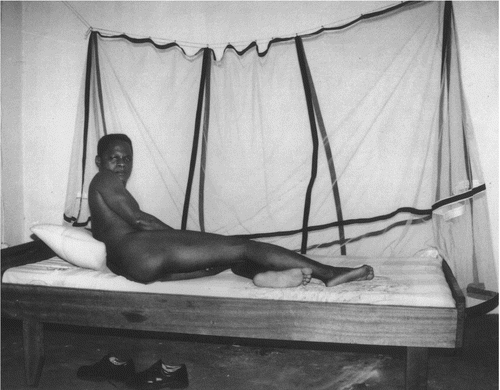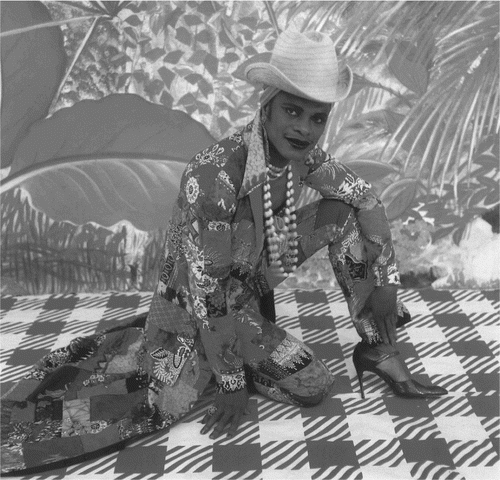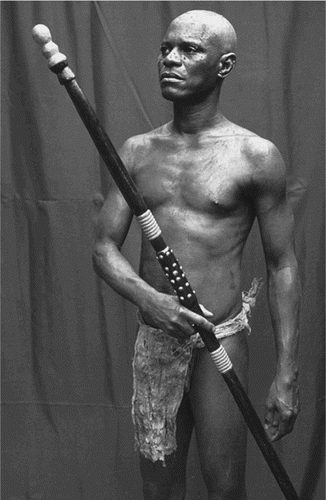Diaspora… implies neither that it offers the comfort of abstraction, an easy recourse to origins, nor that it provides a foolproof antiessentialism; instead, it forces us to articulate discourses of cultural and political linkage only through and across difference in full view of the risks of that endeavor.
Black is… Black ain't'
The essays fall into three emergent thematic areas: theoretical projects that encourage future directions of how we think about blackness and the Diaspora; statements of popular culture in which the writers move beyond the level of mere entertainment to unravel and discern the hegemonic discourses, not to mention the political urgency, to encourage us to look and look again at popular performances; issues of embodiedment, configured in just as many diverse ways, in which many of the contributors articulate how blackness is performed in bodies; and, finally, attending to place and space, where we explore the contours of geographic markers, buildings and even theatres to chart both the resistance and the confinement of blackness.
Some of the essays ask the reader to think differently or more critically on concepts of blackness, while some announce and encourage us to ponder contemporary political performances in the Diaspora, and some even remind us of history (or histories), but they all provide bits of queries of the theme blackness/Diaspora.
We are honoured to have such luminaries as Ngũgĩ wa Thiong'o lead the issue with an invitation to contemplate a performance theory of orature in the age of technology. Also included is a most engaging review essay by Jane Anna Gordon of wa Thiong'o's most recent novel Wizard of the Crow. Gordon situates the novel as a performance of political legitimacy. Lewis Gordon presents a performatively written philosophical exploration of the internal struggles of Fanon with desire and reason. We come to realize Fanon as a metaphor of the struggles of black people around the world. D. Soyini Madison's performance ethnography highlights the topic of water rights in Ghana. An essay that weaves her fieldnotes, a scripted performance, along with the voices of others, Madison's contribution challenges us to think more deeply about the role of our responsibility to human rights and activism in our Diasporic research.
I am equally excited to present a collection of essays that engage us with contemporary popular culture in the Diaspora. The works by Bell-Jordan, Royster and Nyong'o go beyond mere representation and allow for the unpacking of the performance of politics and the production of popular culture. Whereas Bell-Jordan critically interrogates the concept of ‘black humoor’ and Royster explores fascination with the international (white) fandom of Tina Turner, Nyong'o unleashes a thorough political analysis of popular music, Caribbean identities and homosexuality.
Kochhar-Lindgren begins her essay with a quote from Bronwyn T. Williams, ‘“Black” means more than any specific homeland, or more than “homeland” at all. It is a word that emphasizes the heterogeneous and unstable nature of diaspora.’ Like Kochhar-Lindgren, who argues for a ‘heteroglossia of Blackness’, other contributors follow her lead to interrogate seriously the embodiedment of blackness. I have included a performance by a collective of black women (Craft, McNeal, Mwangola and Zabriskie) – all representing various localities of the Diaspora, who come together and theorize both lived-experience and black feminist ethnography. Similarly, Olga Davis's auto-ethnography highlights the unified problematics of black feminism. While she performs her story, she performs and reminds us of the Tulsa, Oklahoma, riot, engaging in the oral history of black female survivors of the 1921 race uprising. Douglas Kearney introduces his new opera in this issue. The opera is a stunning exemplar of the vastness of the black Diaspora by using fragments of diasporic languages to tell a story of survival and resistance.
The final theme to which many of the contributors attend is the distinction between place and space. Catanese provides a critical and theoretical statement of discovery and identity at California's Museum of the African Diaspora (MoAD), Anderson and Kuan extol the dialectics between space and history in the plays of Adrienne Kennedy, and Lynnell Thomas gives a Fanonian frame to tourism, New Orleans and the trauma of hurricane Katrina. This issue concludes with Ewing's amazing review and interview with Georges Adéagbo about his current installation Abraham, L'ami de Dieu at the Philadelphia Museum of Art. Adéagbo's work occupies a very special place as he, living in Benin, collects objects from around the world to construct installations that physically represent a diaspora. They are never complete but scattered and fragmented, yet he maintains unifying linkages. Blackness is a whole lot of things and Diaspora scatter over a whole lot of places and in between is a cornucopia of performances.
I thank the contributors and the reviewers for superbly meeting deadlines and for providing, as the reader will see, both provocative and creative essays. Thanks to Bates College for their generous support in the final production stages of this issue and a special thanks to my colleagues in the programmes of African American and American Cultural studies who continue to support and inspire me. I also thank Richard Gough for his guidance and wise counsel. A special acknowledgement goes to Linden Elmhirst whose high degree of professionalism, attention to detail and gracious manner made the process enjoyable and affirming. I thank the contributors and the reviewers for superbly meeting deadlines and for providing, as the reader will see, both provocative and creative essays. Thanks to Bates College for their generous support in the final production stages of this issue and a special thanks to my colleagues in the programmes of African American and American Cultural studies who continue to support and inspire me. I also thank Richard Gough for his guidance and wise counsel. A special acknowledgement goes to Linden Elmhirst whose high degree of professionalism, attention to detail and gracious manner made the process enjoyable and affirming.


